Inside The New York Botanical Garden
Around the Garden
Posted in Around the Garden on October 18 2011, by Ann Rafalko
They’re spooky and they’re ubiquitous, and they’re heading straight for the Bronx! That’s right, beginning this weekend, zombies will be invading the Haunted Pumpkin Garden, courtesy of pumpkin-carving provocateur Ray Villafane. Currently appearing on the Food Network’s “Halloween Wars,” Villafane will be calling the Garden home this weekend, where he’ll be carving two of the world’s biggest pumpkins into one unforgettable pumpkin sculpture.
Want to see what Ray has got planned? Head below the jump to check it. But be warned, it’s the stuff of pumpkin nightmares!
Read More
Posted in Around the Garden on October 17 2011, by Ann Rafalko
 Hold the presses! You know how we told you that beginning October 21, the Garden would be home to the three biggest pumpkins in the U.S.? Well, we lied. Beginning October 21, the Garden will now be home to the four biggest pumpkins in the world! That’s right, we said world.
Hold the presses! You know how we told you that beginning October 21, the Garden would be home to the three biggest pumpkins in the U.S.? Well, we lied. Beginning October 21, the Garden will now be home to the four biggest pumpkins in the world! That’s right, we said world.
Just this weekend a new world’s biggest pumpkin was crowned in Canada. Weighing in at 1818.5 pounds and grown by Jim and Kelsey Bryson of Ormstown, Quebec, the new heaviest pumpkin in the world out-weighs last year’s world-record holder (which also called the Garden home for a time) by 8 pounds! Congratulations Jim and Kelsey! We can’t wait to meet you and your great pumpkin.
Head below to see pictures of the Bryson's giant pumpkin.
Posted in Around the Garden on October 14 2011, by Karen Daubmann
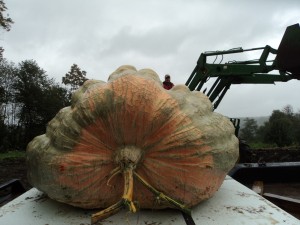 The New York Botanical Garden is proud to announce the Great Pumpkin Commonwealth’s Showcase of Champion’s winners for 2011!
The New York Botanical Garden is proud to announce the Great Pumpkin Commonwealth’s Showcase of Champion’s winners for 2011!
Beginning Friday, October 21 the three largest pumpkins in the United States will be on display in the Garden’s Visitor Center. Come take a look at Dave and Carol Stelts’ 1,807.5 lb pumpkin grown in Edinburgh, PA. Also, be on the lookout for a plane from California bearing a 1,704 lb pumpkin grown by Leonardo Urena as well as the 1,693 lb pumpkin grown by Brant and Eleanor Bordsen.
Here is a look at the standings for all 1,471 entries at the 54 GPC weigh-off locations nationwide.
Come out and take a look at these giant pumpkins beginning Friday, October 21. Mingle with the giant pumpkin growers, tweet us a picture of yourself with the pumpkins, and don’t miss our first carving weekend featuring Ray Villafane on October 22 and 23.
Check out some of these giant gourds as they make their way to the Garden!
Posted in Around the Garden on October 13 2011, by Karen Daubmann
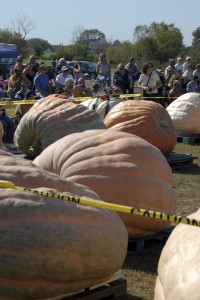 It’s that time of year again, when pumpkins are harvested and brought to county fairs and farm stands to be weighed at one of the Great Pumpkin Commonwealth‘s regional weigh offs.
It’s that time of year again, when pumpkins are harvested and brought to county fairs and farm stands to be weighed at one of the Great Pumpkin Commonwealth‘s regional weigh offs.
The Commonwealth’s five U.S. regions host a total of 54 weigh–offs. Anticipation of these weigh-offs has been building at The New York Botanical Garden as we will host the GPC’s Showcase of Champions beginning October 21. The Showcase of Champions, as part of the Haunted Pumpkin Garden, will feature the three largest pumpkins from the regional weigh-offs. The pumpkins will be on display October 21 – October 30 and will be carved October 22-23 by pumpkin-carving provocateur Ray Villafane, and October 29-30 by creator of the gourd-geous installations in the Haunted Pumpkin Garden, Michael Natiello.
Check out a slideshow of my visit to one of the New England regional pumpkin weigh-offs below!
Posted in Around the Garden on October 5 2011, by Ann Rafalko
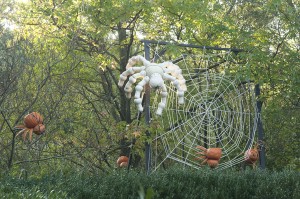 For a lot of people in the New York-area this weekend is a three-day weekend! To celebrate, the Garden will be open Monday, October 10, 10 a.m.-6 p.m. And you know what makes it even better? The weather forecast is looking gorgeous! Such a welcome change after so many grey, rainy, dreary weekends.
For a lot of people in the New York-area this weekend is a three-day weekend! To celebrate, the Garden will be open Monday, October 10, 10 a.m.-6 p.m. And you know what makes it even better? The weather forecast is looking gorgeous! Such a welcome change after so many grey, rainy, dreary weekends.
What is there to do on a beautiful fall weekend at The New York Botanical Garden? So much! There’s kiku and bonsai, leaf peeping in the Forest, the Haunted Pumpkin Garden, walking tours, birdwatching, home gardening demonstrations, music performances, and so much more (don’t forget to stop and smell the roses). The Garden is never the same two days in a row, so come spend a day in one of the world’s greatest urban gardens, The New York Botanical Garden! See the full schedule below, and plan your visit now.
Check-out all the Columbus Day-weekend fun below!
Posted in Around the Garden on October 4 2011, by Ann Rafalko
This funny little blue weed looks like something straight out of a children’s cartoon. And like many cartoons it is an import into the U.S., but unfortunately not a very funny one. Commelina communis is originally from Asia and is commonly seen in waste places, especially places with water and shade. Commonly known as the Asiatic Dayflower, this cherry but aggressive weed spreads through prolific seed production, crowding-out more desirable native plants. Fortunately, it is easy to identify, and even easier to pull out of the ground.
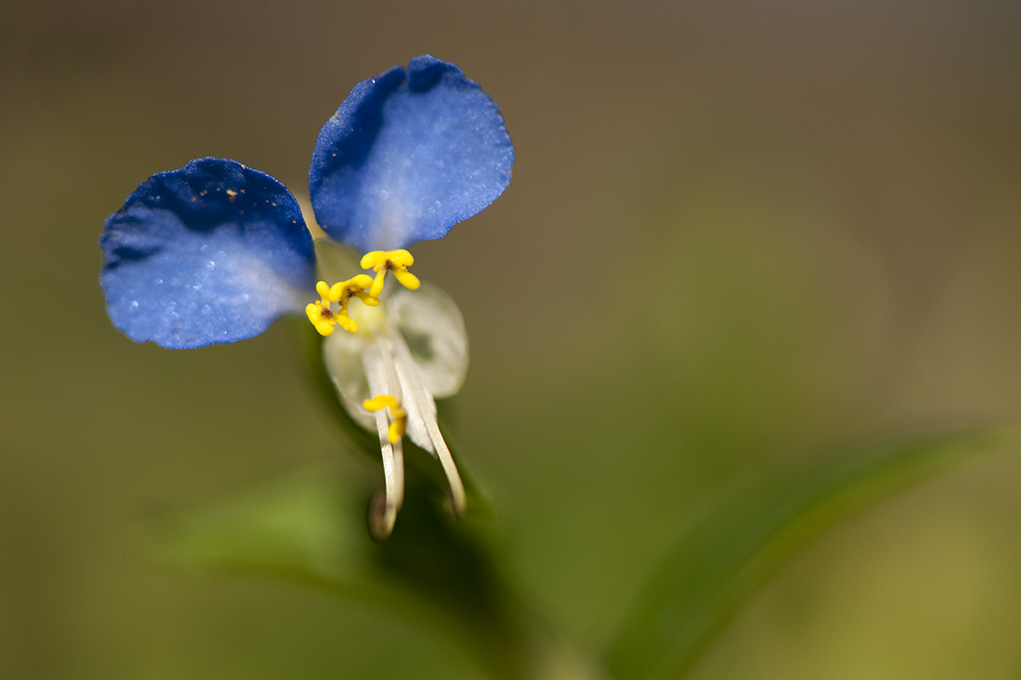
Photo by Ivo M. Vermeulen
Posted in Around the Garden on September 26 2011, by Scott Mori
 Manisha Sashital, a student in Environmental Engineering and Environmental Policy at Carnegie Mellon University, worked on a botanical glossary under the supervision of Dr. Mori at the Garden this summer. As part of her internship she prepared a cartoon illustrating the relationship between photosynthesis and respiration.
Manisha Sashital, a student in Environmental Engineering and Environmental Policy at Carnegie Mellon University, worked on a botanical glossary under the supervision of Dr. Mori at the Garden this summer. As part of her internship she prepared a cartoon illustrating the relationship between photosynthesis and respiration.
 Scott A. Mori has been studying New World rain forest plants for The New York Botanical Garden for over 35 years. His interest in tropical forests as carbon sinks have been stimulated by his studies of trees in old growth tropical forests.
Scott A. Mori has been studying New World rain forest plants for The New York Botanical Garden for over 35 years. His interest in tropical forests as carbon sinks have been stimulated by his studies of trees in old growth tropical forests.
Global warming has become one of the planet’s deadliest threats. Since the Industrial Revolution, carbon dioxide concentrations have risen from 280 ppm to nearly 390 ppm, with the potential to reach 550 ppm by 2050 if carbon emissions from fossil fuel combustion are not controlled. The earth has experienced major warming three times; but the Cretaceous warming period took place over millions of years and the Paleocene/Eocene warming happened over thousands of years. In contrast, today’s temperature changes are happening over decades. As a result, many species, perhaps even humans, may not be able to adapt to such rapid and high increases in temperature. One concern that is generally unknown to the public is that photosynthesis, the source of energy for nearly all organisms on the planet, shuts down at around 104° F. Mankind’s extreme disruption of the carbon cycle is causing and will continue to cause serious consequences for life on earth.
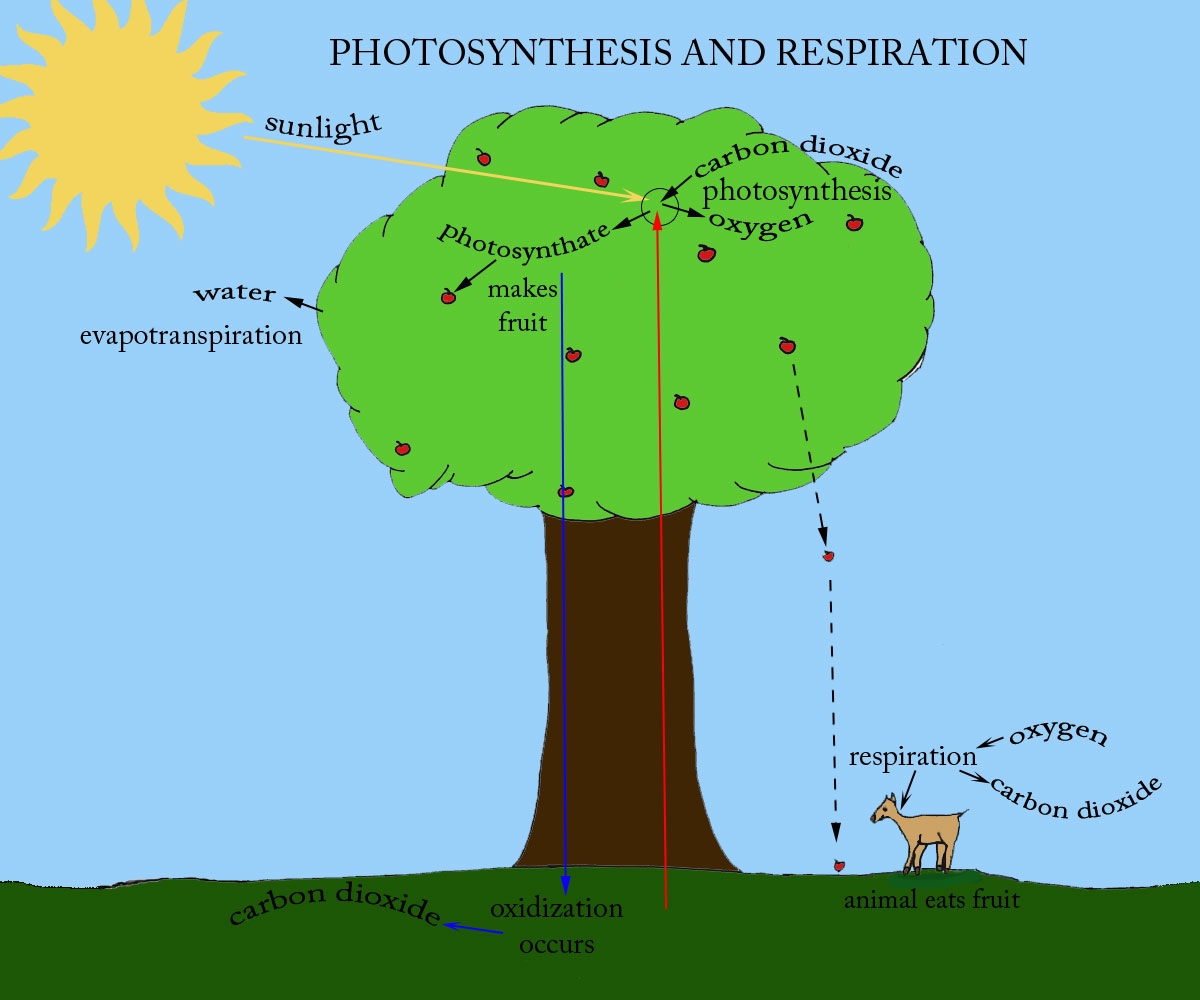 Carbon dioxide levels contribute to global warming through the greenhouse effect. Greenhouse gases trap radiation from the sun in the atmosphere, which causes global temperatures to rise because the radiation is not reflected back out of the atmosphere. The reason for today’s increased atmospheric carbon levels can be attributed to the combustion of fuels used for the production of electricity and in transportation, both of which are essential to modern societies; as well as to cutting and burning forests throughout the world. Since there is no precedent for the rapidity of current temperature increases, it is impossible for humans to predict which areas of the world will be affected and at what magnitude. The unpredictability of global warming makes it an especially serious environmental problem.
Carbon dioxide levels contribute to global warming through the greenhouse effect. Greenhouse gases trap radiation from the sun in the atmosphere, which causes global temperatures to rise because the radiation is not reflected back out of the atmosphere. The reason for today’s increased atmospheric carbon levels can be attributed to the combustion of fuels used for the production of electricity and in transportation, both of which are essential to modern societies; as well as to cutting and burning forests throughout the world. Since there is no precedent for the rapidity of current temperature increases, it is impossible for humans to predict which areas of the world will be affected and at what magnitude. The unpredictability of global warming makes it an especially serious environmental problem.
Rain forests as well as other vegetation types play an important role in reducing the levels of carbon dioxide in the atmosphere. Annually, plants in tropical rain forests around the world take in millions of tons of carbon dioxide and release millions of tons of oxygen through photosynthesis, and this balances the respiration of microbes, plants, and animals, which take in oxygen and expel carbon dioxide. As seen in the accompanying cartoon, plants take in carbon dioxide and water and use the energy of the sun to create carbohydrates that are, in turn, oxidized to produce the energy needed for plants to sustain themselves. The carbohydrates are also the building blocks plants use to make leaves, stems, flowers, and fruits. Oxygen, the byproduct of respiration, is used by organisms to break down ingested carbohydrates to produce the energy needed for them to grow and reproduce. Mankind’s extreme disruption of the carbon cycle is and will continue to have serious consequences for life on earth.
Read More
Posted in Around the Garden on September 22 2011, by Ann Rafalko
Kingsville Boxwood Buxus microphylla ‘Compacta.’ Approximately 55 years old, and 34 years in training in the Ne Tsuranari Style (sinuous raft). This beautiful bonsai is exhibited by Jerome Rocherolle.
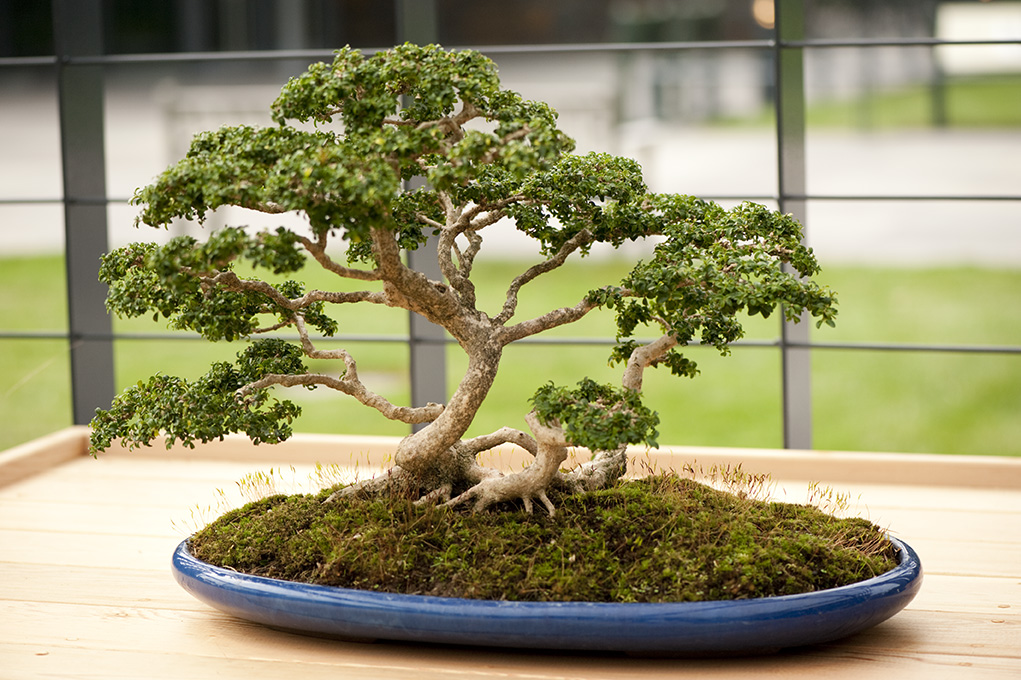
Kingsville Boxwood Buxus microphylla ‘Compacta’ (photo by Ivo M. Vermeulen)
Head below to learn more about how to see this beautiful bonsai.
Posted in Around the Garden on September 11 2011, by Ann Rafalko

Posted in Around the Garden on September 10 2011, by Ann Rafalko
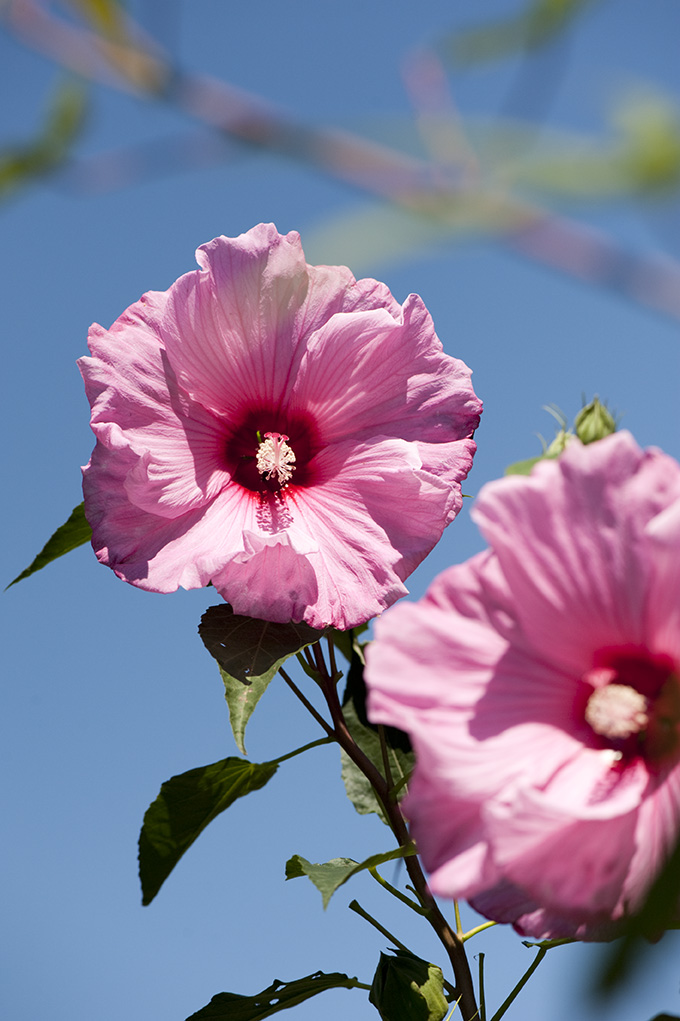
Hibiscus ‘Fantasia’ (photo by Ivo M. Vermeulen)






 Manisha Sashital, a student in Environmental Engineering and Environmental Policy at Carnegie Mellon University, worked on a botanical glossary under the supervision of Dr. Mori at the Garden this summer. As part of her internship she prepared a cartoon illustrating the relationship between photosynthesis and respiration.
Manisha Sashital, a student in Environmental Engineering and Environmental Policy at Carnegie Mellon University, worked on a botanical glossary under the supervision of Dr. Mori at the Garden this summer. As part of her internship she prepared a cartoon illustrating the relationship between photosynthesis and respiration. Scott A. Mori has been studying New World rain forest plants for The New York Botanical Garden for over 35 years. His interest in tropical forests as carbon sinks have been stimulated by his studies of trees in old growth tropical forests.
Scott A. Mori has been studying New World rain forest plants for The New York Botanical Garden for over 35 years. His interest in tropical forests as carbon sinks have been stimulated by his studies of trees in old growth tropical forests.


